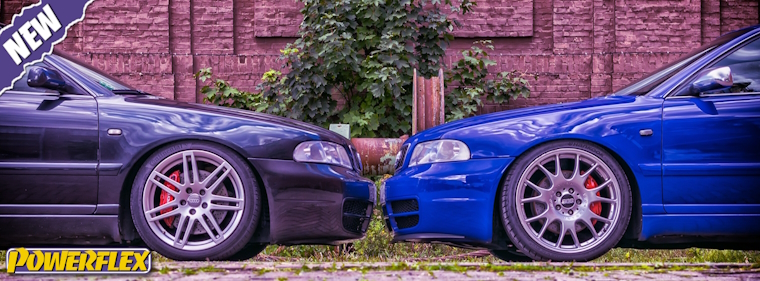Previously we have discussed caster changes and the effect on vehicle dynamics.
This week we look at camber, possibly the more popular geometry to alter.
Put simply, negative camber is most popular on modern cars and is where the bottom of the wheel is further “out” than the top looking from ahead and compared in the vertical plane.

Older race cars ran positive camber to reduce steering effort and due to their narrow tyres it did not have the effect that it would on cars with modern wider tyres. Whilst we can think of no reason for needing positive camber now, reducing negative camber can be very important.

We manufacture a number of parts to allow camber to be modified on suspension systems where no modification is possible, and it is not always about increasing camber.
Increasing negative camber may be beneficial to improve front end grip and turn-in on a track biased car.
However it is not always about performance. Camber adjustment can be needed to correct an imbalance from side to side to reduce tyre wear, and lowering a vehicle can increase negative camber to the point of increasing tyre wear. (A very common problem on the VW Transporter, solved with these bushes)

We manufacture a huge range of parts for many different cars that allow camber adjustment or correction.
From camber bolts that allow adjustment on fixed McPherson strut suspension, to clever on-car adjustable bushes like these Alfa ones, developed to correct a common geometry issue. Or these Porsche bushes, adjustable to allow precise geometry tuning.

Don’t forget our handy little magnetic camber gauge too






















